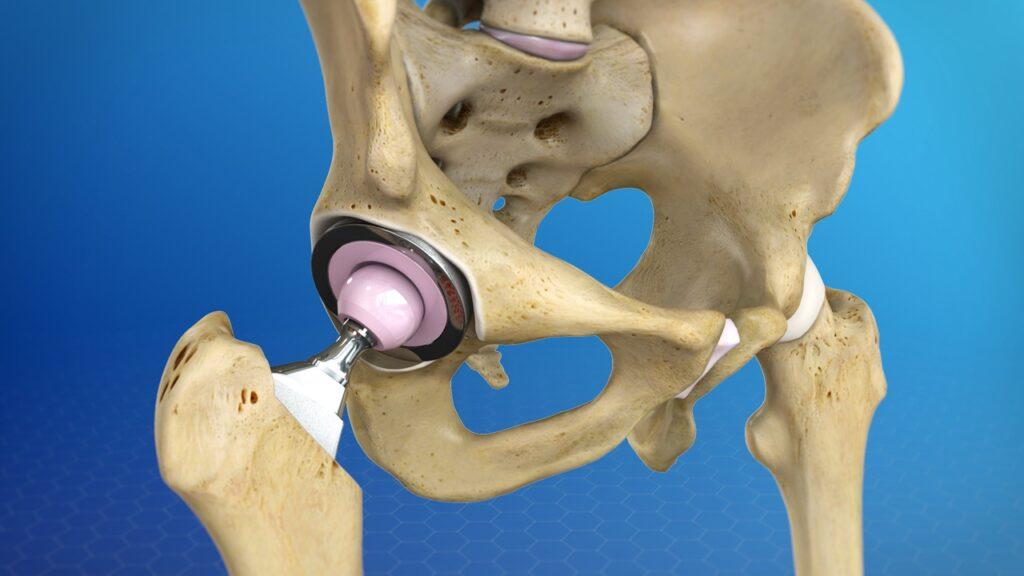Hip replacement surgery is one of the most common and successful procedures performed to restore mobility and reduce pain in individuals suffering from chronic hip conditions, such as osteoarthritis, rheumatoid arthritis, or hip fractures. If you’ve been living with chronic hip pain, you may have considered or even been advised to undergo hip replacement surgery. It’s important to fully understand the procedure, benefits, and recovery process before making any decisions. To help you gain a deeper understanding, we’ve created a detailed video that walks you through the entire process, from pre-surgery preparation to the final stages of recovery.
What is Hip Replacement Surgery?
Hip replacement surgery involves removing the damaged or worn-out parts of the hip joint and replacing them with artificial components. These artificial joints, typically made from metal, plastic, or ceramic materials, are designed to mimic the natural function of your hip joint. The goal of the procedure is to alleviate pain, restore mobility, and improve the overall quality of life. The surgery is generally recommended when conservative treatments like medication, physical therapy, or lifestyle changes have not been effective in managing the pain and immobility caused by hip joint degeneration.
Why Choose Hip Replacement Surgery?
If you’re struggling with severe hip pain, hip replacement surgery can offer a significant improvement in your daily life. For those with osteoarthritis or other degenerative joint diseases, the pain can become debilitating, making it difficult to perform even simple activities like walking, climbing stairs, or getting in and out of a car. This can also impact your emotional well-being, leading to frustration and even depression.
After hip replacement surgery, patients typically experience a dramatic reduction in pain, along with restored mobility. This means you can return to your favorite activities, enjoy time with family and friends, and regain your independence. Whether you want to take a walk in the park or get back to a sport you love, hip replacement surgery can help make it possible.
What to Expect in the Video:
Our video on hip replacement surgery provides a comprehensive overview of the procedure. You’ll learn about the steps involved in the surgery, the types of implants used, and the innovations in modern surgical techniques. The video will also discuss the recovery process, including the importance of physical therapy and rehabilitation in helping you regain strength and mobility.
You'll hear from medical professionals who specialize in hip replacement surgery, providing insights into the best practices for preparation and post-surgery care. The video will also include personal stories from patients who have undergone the surgery, sharing their experiences and how their lives have improved after recovery.
Recovery and Aftercare:
After the surgery, most patients are able to return to normal activities within a few months, depending on the individual’s health and commitment to rehabilitation. Physical therapy plays a crucial role in the recovery process, helping you regain strength, flexibility, and coordination in your hip joint. It’s important to follow the doctor’s instructions and attend all follow-up appointments to ensure the best possible outcome.
Final Thoughts:
Hip replacement surgery is a safe and effective procedure that can improve your quality of life. If you’re considering the surgery, be sure to consult with your doctor and watch our informative video to gain a better understanding of what to expect. With the right preparation and support, you’ll be on your way to a pain-free, active life.
Conclusion:
Hip replacement surgery is a life-changing procedure that can provide significant relief from chronic hip pain, restore mobility, and improve overall quality of life. By removing the damaged parts of the hip joint and replacing them with artificial components, this surgery offers a long-term solution for those struggling with conditions like osteoarthritis, rheumatoid arthritis, or hip fractures. While the recovery process requires dedication and physical therapy, the benefits far outweigh the challenges, enabling individuals to regain independence, enjoy daily activities, and live pain-free once again.
-
For More Treatment Information Below Link:-
